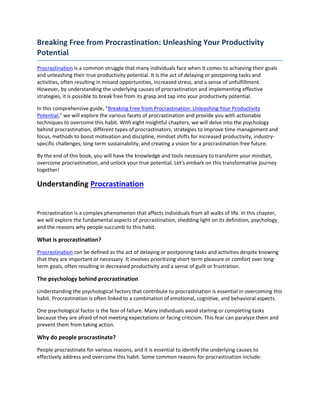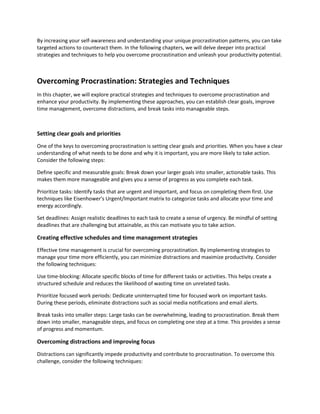The document discusses strategies for overcoming procrastination and increasing productivity. It explores the causes of procrastination including lack of clarity, overwhelm, desire for instant gratification, and poor time management. Procrastination can lead to reduced productivity, increased stress, missed opportunities, and strained relationships. The document recommends setting clear goals and priorities, improving time management through effective scheduling, and breaking large tasks into smaller, manageable steps to combat procrastination.












